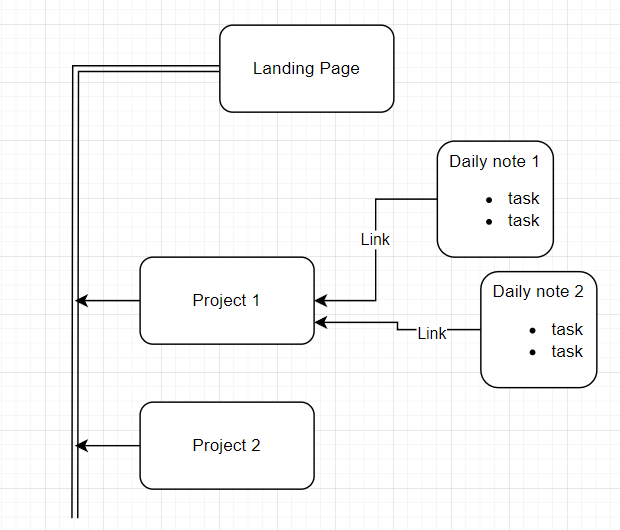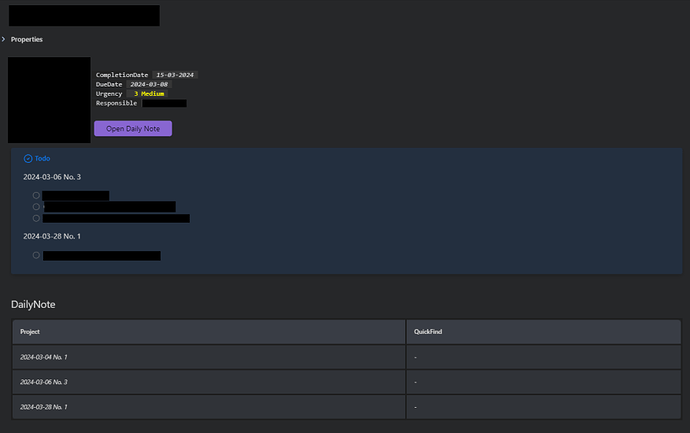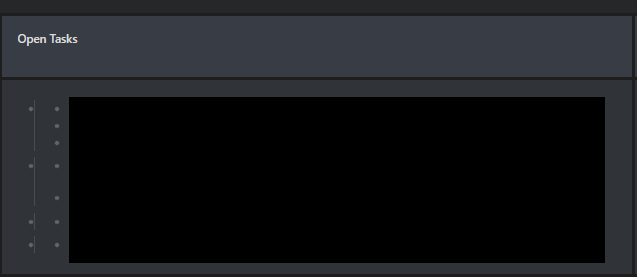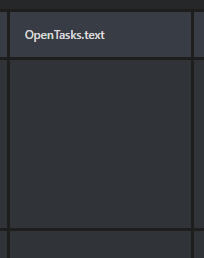Hi, I have been trying to solve this on and off for a couple of months.
I want to display all open tasks on my Project management landing page, but I just can’t get it to work.
I would like if it looked like this:
The file structure of a project looks something like this:
In each Project note I am able to display the open tasks from all the daily notes that link to it
I’d like to display the open Tasks, that are “collected” in each Project-Note in the table on the landing page. I don’t want them displayed as task, but as a list like indicated in the first picture.
My Ideas
- I have mainly been trying things with file.tasks.text, but I think that this query doesn’t recognize the tasks that are displayed in another dataview block. I tested it with tasks written directly in the Project-Note and it worked flawlessly.
- An alternate way for a solution is that I manage to collect the open tasks on the Project-Note in another way, which doesn’t involve dataview but I have no clue how this would even be possible. I need the tasks to automatically update, when I add them or complete them. The only reason why I don’t add the tasks on my Project-Note directly is because it’s way less clean then if it only shows my open tasks.
- The final idea that I had was to not try to get the tasks from the Project-Page, but from all the notes that link to it. But yet again I have no Idea how to do this. I assume that this way might necessitate coding, at which I suck.
Any solution or Idea is more then welcome but I can’t change the structure of my workflow. It works great for me and I managed to automate almost everything.






